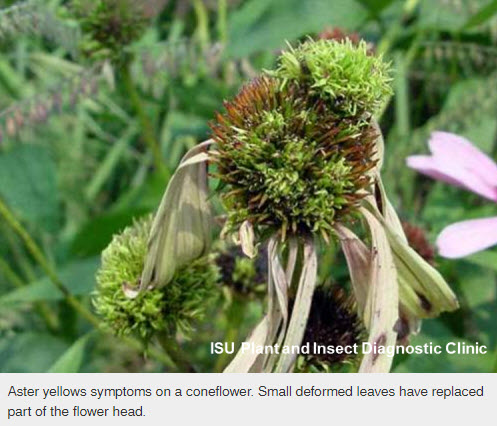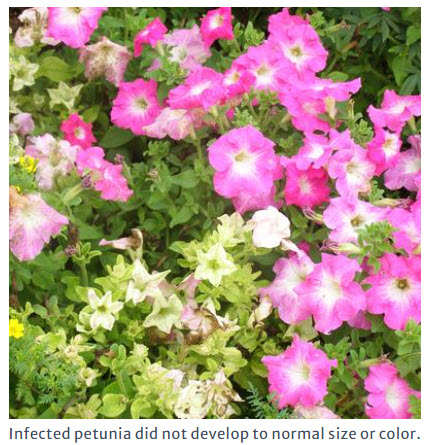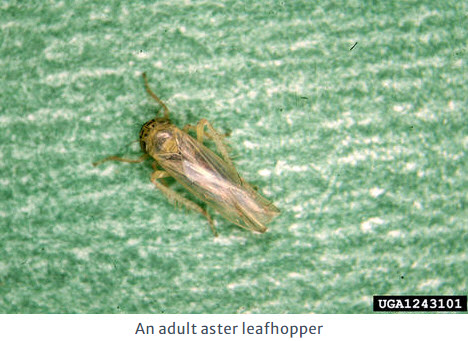Click below to listen to my 2 min. Garden Bite radio show/podcast: Aster yellows
Audio PlayerHave you seen Aster Yellows? While that sounds like it would be a pretty flower, it’s anything but. I’ve heard from listeners that it’s in their area.

Aster yellows causes bizarre symptoms on plants.
Typical symptoms include veins that turn pale, yellowing of new leaves, abnormally bushy growth, deformed flowers, and stunting. Some look like they’re growing another plant in a flower itself. It can look like witches broom. Or sometimes you don’t even know something’s wrong. THAT is not good!

While the disease can be found on hundreds of plants; some seem to be affected more. Those include coneflowers, daisies, marigolds, zinnias, snapdragons, chrysanthemums, tomatoes, carrots and lettuce. The University of Minnesota Extension has more photos and information.
Aster yellows is caused by a tiny organism called a phytoplasma, similar to a bacterium.
The phytoplasma is carried from plant to plant by aster leafhoppers, which feed on the sap of the plants. There’s no managing this tiny organism or the insect that carries it as it’s hard to differentiate between other leafhoppers.


The best thing you can do is get the infected plant out of your garden and destroy it.
You can compost it BUT be sure to BURY the plant so that other insects cannot feed on it. If they do, they’ll be infected and carry it with them. You can burn it too but do NOT put any plant material in your garbage can.
Aster yellows moves through the plant, infecting every part from the roots through the flowers. The pathogen affects the plant’s growth, development and ability to store nutrients. While the phytoplasma won’t survive in the debris of infected plants, it CAN survive in the crown and roots of infected perennials.
Iowa State University Extension has more information and links too.

